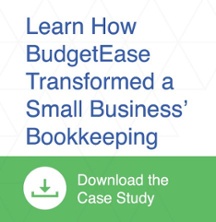 The Pandemic has brought to light the importance of financial management at nonprofit organizations. Many organizations are overwhelmed with demand and short on resources. A crisis always highlights weaknesses, but it can also identify opportunities. As a board member, what financial information do you need to guide the organization though the ever-changing community the nonprofit serves?
The Pandemic has brought to light the importance of financial management at nonprofit organizations. Many organizations are overwhelmed with demand and short on resources. A crisis always highlights weaknesses, but it can also identify opportunities. As a board member, what financial information do you need to guide the organization though the ever-changing community the nonprofit serves?
Here are the financial tools you should have to be prepared for the next crisis.
Viability Determination
Determining the viability of each program and event is important. To do this, review the Statement of Activity by Program and Event report.
Has the staff fallen in love with their ideas? Generating a Statement of Activity by Program comparison report will tell a story of the mission of the organization. Ideally, you will compare current data to past years, the budget, and other organizations (if you can).
Certainly, programs and events are more than just financial results. Consideration of the best use of the funds in context with the organization’s mission is an important consideration. Questions to ask:
- What are the real and opportunity costs of a program and SORI (social return on investment)?
- What value are you creating by providing your service?
- How do you differentiate among competing organizations?
Financial Stability
Review the financial stability of the organization by taking a deep look at the Statement of Financial Condition, the Audit, and key performance indicators, like monthly cost to run the organization and number of months cash available.
As a fiduciary of the organization, encourage maintaining six months of liquid assets as a cushion to weather an unexpected crisis. For many organizations, this is an aspiration worthy of board support.
Support
Understand who is supporting the organization. You can accomplish this by viewing a Support by Donor Report by year for 4-5 years. This will help you determine if a large percent of support is coming from one source. Also, determine if the organization needs diversification (grantors and donors).
Resiliency & Flexibility
To determine the resiliency and flexibility of the organization, use Scenario Planning. By doing this, you can see what the organization would look like without 40% of its income. This information is useful to identify ways to become more flexible and nimbler if needed.
Evaluate New Programs
To promote and manage innovation, have clear financial and mission criteria for evaluating new programs. A significant part of the criterial must be a financial component. As a board member, promote logical and thoughtful innovation by providing criteria so the team knows what is viable.
The Finance Committee
Fortunately, you can rely on the Finance Committee to do the deep dive and scrutinize the financial information. The Finance Committee will analyze and make recommendations for your approval. They roll up their sleeves, do assessments, and bring up risks. Questions you can ask:
- Do you review each program and event to determine if they are financially viable in light of our mission? How often are they reviewed? When a program is not financially viable, what happens?
- How many months can this organization survive with a 40% reduction in donations and grant revenue?
- How much of total cash inflows comes from our top three donors?
- What are the criteria for evaluating new, innovative programs?
Keep in mind the words of Sister Irene Kraus, who successfully directed six hospitals. She said, “No Margin, No Mission.” Sister Kraus believed charity wasn’t enough to sustain a mission, she believed that institutions had to be financially solid.
About This Blog
BudgetEase has professionals who specialize in bookkeeping for nonprofits. The Wasserman Consulting Group provides advisory services to nonprofits including grant writing, visioning, strategic planning, programming review, messaging, and staffing.





